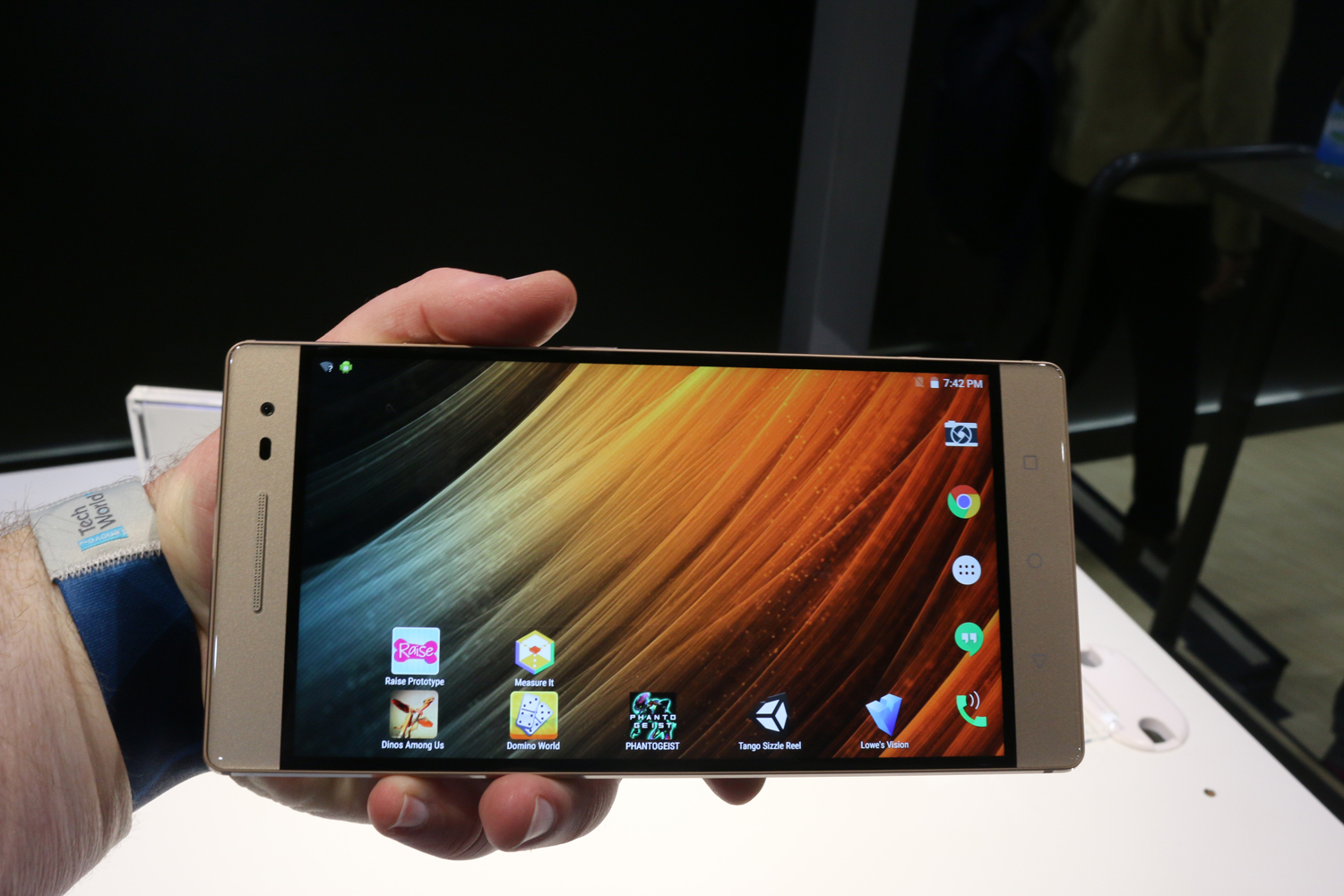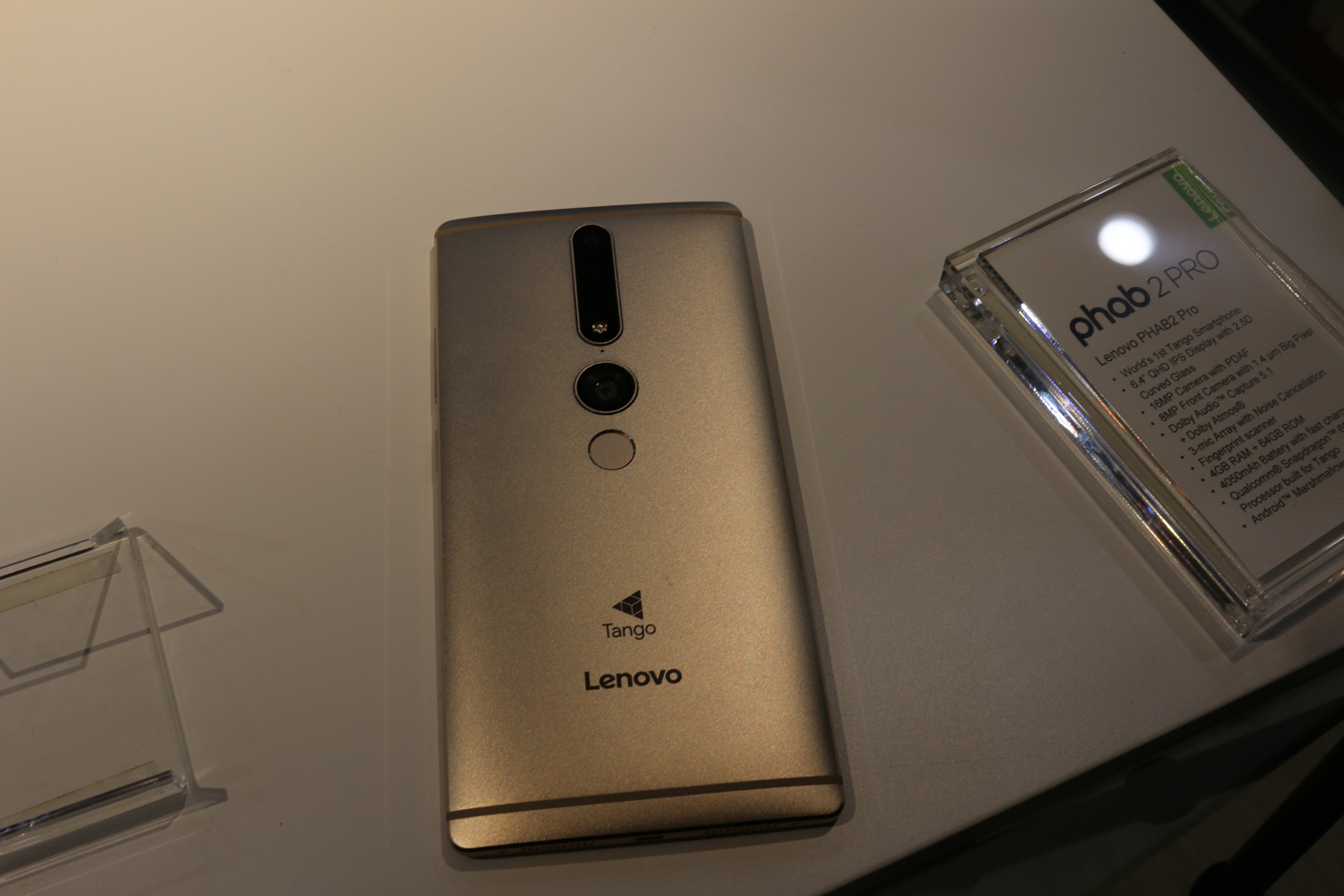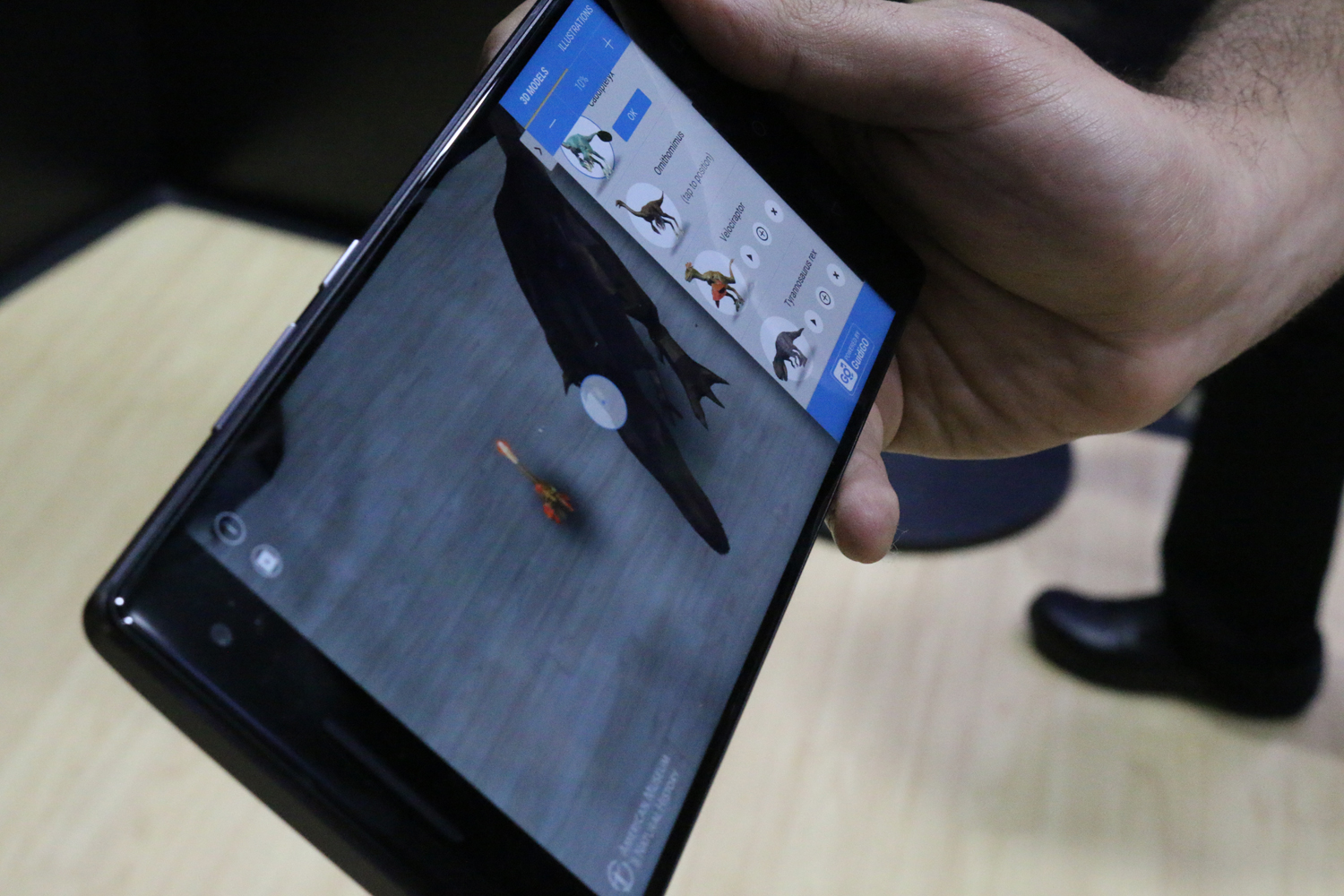My Aha Moment with Lenovo's New Tango Phone
If people embrace Lenovo's huge new Phab2 Pro phone, it will be because developers have created apps that take advantage of the phone's depth-perception and motion-tracking features.
SAN FRANCISCO — Lenovo faces a challenge with the Phab2 Pro, the first phone released to feature Google's Tango technology for augmented reality. If the phone maker is going to convince people that Tango's 3D motion tracking and depth perception features aren't just novelties but the kind of capabilities that will be handy every day, it's going to need people to experience "a-ha" moments when holding the massive Phab2 Pro.
For me, that moment occurred when I was shopping at a hardware store.
Well, I wasn't actually shopping. I was going through a demo area at Lenovo's Tech World event with a backdrop set-up to look like a hardware store so that I could see a beta version of features that Lowe's is working on for its Tango-ready app. I was using a Phab2 Pro to view objects on the giant phone's 6.4-inch display and summon up more information about them as I made my way through the makeshift store.
MORE: Meet Lenovo's First Project Tango Phone
If I saw an item that struck my fancy, I could tap it to summon up a green dot. Swiping that dot brought up more information — pricing, a product description, even customer reviews. These weren't just flat floating boxes, either; as I moved closer to a product they got larger, taking advantage of Tango's ability to map my distance relative to the virtual objects I'm seeing.
As a demo, it was a particularly effective display on what Tango-powered phones like the Phab2 Pro can do for you and me. The data floating on the Phab2 Pro's screen was relevant to the task at hand and informative. It was simple enough for me to use, without a lot of learning curve. And it showcased Tango's ability to track the space around me and my movement.
"Your phone knows where you are in the world, but not where you are in the room," said Johnny Lee, Google's lead on the Tango Project. That's not the case with the Phab2 Pro, which, as I learned in this demo, is perfectly aware of where I am and what's around me.

And if the Phab2 Pro is going to make its mark, it's going to need a lot more of those demos to convince people that they stand to benefit from this Tango-ready phone's back of tricks.
To the credit of both the Lenovo and Google reps speaking at Lenovo Tech World, they clearly understand that. "For any technology to move to broad-scale adoption, it must be relevant in people's everyday lives," said Jeff Meredith, general manager and vice president of Lenovo's Android and Chrome Computing Business Group. Lenovo has told us that there will be 25 to 30 Tango-ready apps when the Phab2 Pro arrives this fall, with around 100 available by the time we're getting ready to ring in 2017.

And Lenovo can make a pretty compelling case for the Phab2 Pro. Here's a plenty powerful phone that lets you experience augmented reality without the need for any extra hardware — no giggle-inducing eyeglasses, no bulky headsets and no cables tethering you to other machines. You just point your phone and the depth- and motion-tracking cameras that join a 16-megapixel shooter on the rear, fire up a Tango-friendly app, and you're good to go.
That's an important pitch, because not everyone is going to want to tote around a phone as hefty as the Phab2 Pro. It takes a 7.1 x 3.5-inch frame to house the Phab2 Pro's 6.4-inch Quad HD display, with the phone reaching 0.42 inches at its thickest point. All those sensors packed into the Phab2 Pro add some noticeable weight: I felt all 9.1 ounces of the phone when I picked it up, especially compared to the regular Phab2 and Phab2 Plus, which are just as large but weigh an ounce or two less. People are going to look at the Phab2 Pro, then look at the size of their pocket (assuming they even a pocket) and decide it's just not worth it.
Sign up to get the BEST of Tom's Guide direct to your inbox.
Get instant access to breaking news, the hottest reviews, great deals and helpful tips.

That would be a shame, if the demos at Lenovo Tech World were anything to go by. I've seen a few of them already as recently as last month's Google I/O conference, though that was using a larger tablet that's part of Google's developer kit for Tango. (Though not that much larger than the Phab2 Pro as it turns out.) Still, it's helpful to see what the Phab2 Pro can do, whether that's resizing dinosaurs so that a Tyrannosaurus rex and velociraptor appear in perfect scale on the floor in front of you, or using a more built-out version of the Lowe's app to redecorate a room with virtual flooring and furniture.
An app I hadn't seen before struck my fancy as a way to use a Tango device like the Phab2 Pro as a gaming machine. The Domino World app lets you construct elaborate domino displays just by holding down a button and dragging your finger around the screen to create a domino hologram on the table or floor in front of you. You can also add in special effects, like a UFO that grabs a cow in a tractor beam and swings it around to knock down dominos or a bomb that causes nearby dominos to explode as they're toppled. It's a fun AR-take on an old game with no need to clean up afterwards.

Perhaps the biggest challenge facing Lenovo and Google will be to define who exactly a Tango-ready phone like the Phab2 Pro is for. Contractors and designers seem like an ideal fit, given that you can make measurements on the Phab2 Pro just be drawing a line with your finger. The phone's massive 4,050 mAh battery, which promises 15 to 18 hours of talk time on one charge, could make it ideal for someone who does a lot of work in the field, though we'd have to see just how durable the Phab2 Pro turns out to be.
But the dominos game and another demo where players were strapping on Phab2 Pros to toy guns to create a first-person shooter has me wondering if there's not room for Lenovo's new Tango-based phone as a gaming device. The Phab2 Pro's $500 price tag certainly doesn't make it prohibitively expensive. And depending what apps are ready when the phone arrives this fall, we could see a device with a flair for gaming.
Philip Michaels is a Managing Editor at Tom's Guide. He's been covering personal technology since 1999 and was in the building when Steve Jobs showed off the iPhone for the first time. He's been evaluating smartphones since that first iPhone debuted in 2007, and he's been following phone carriers and smartphone plans since 2015. He has strong opinions about Apple, the Oakland Athletics, old movies and proper butchery techniques. Follow him at @PhilipMichaels.

